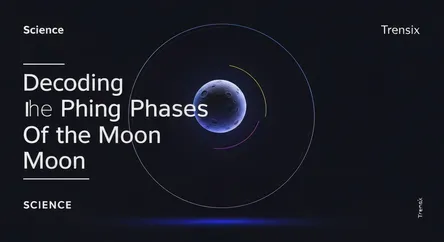Science
Decoding the Phases of the Moon

Discover the eight phases of the Moon, from New Moon to Full Moon. Learn how the lunar cycle is caused by the Moon's orbit around Earth.
What is it?
The phases of the Moon are the different ways the Moon appears from Earth over a month. As the Moon orbits our planet, the portion we see illuminated by the Sun changes. This 29.5-day cycle, known as the lunar cycle, is divided into eight main phases: New Moon, Waxing Crescent, First Quarter, Waxing Gibbous, Full Moon, Waning Gibbous, Third Quarter, and Waning Crescent. The 'waxing' phases occur as the visible sunlit portion grows, leading up to the Full Moon, while the 'waning' phases happen as the illumination shrinks back to the New Moon, when the Moon is not visible to us.
Why is it trending?
Interest in moon phases is perpetually popular due to a blend of scientific curiosity, cultural traditions, and wellness trends. Stargazing apps make it easy for anyone to track the lunar cycle, and celestial events like supermoons or lunar eclipses often go viral. Furthermore, practices such as astrology, biodynamic gardening, and even fishing are often tied to specific moon phases, boosting their relevance in various online communities. The aesthetic appeal of the Moon also makes it a popular subject in photography and social media, constantly renewing its trendiness.
How does it affect people?
Historically, the Moon's phases were fundamental for timekeeping, forming the basis for many ancient calendars and guiding agricultural practices. Culturally, the lunar cycle continues to influence festivals like Easter and Ramadan. While the Moon's gravitational pull directly causes ocean tides, its scientifically proven effect on human biology is minimal. However, many people anecdotally report connections between moon phases and their sleep patterns or moods. Regardless of scientific validation, the lunar cycle remains a powerful symbol in human culture, inspiring art, mythology, and a sense of connection to the cosmos.